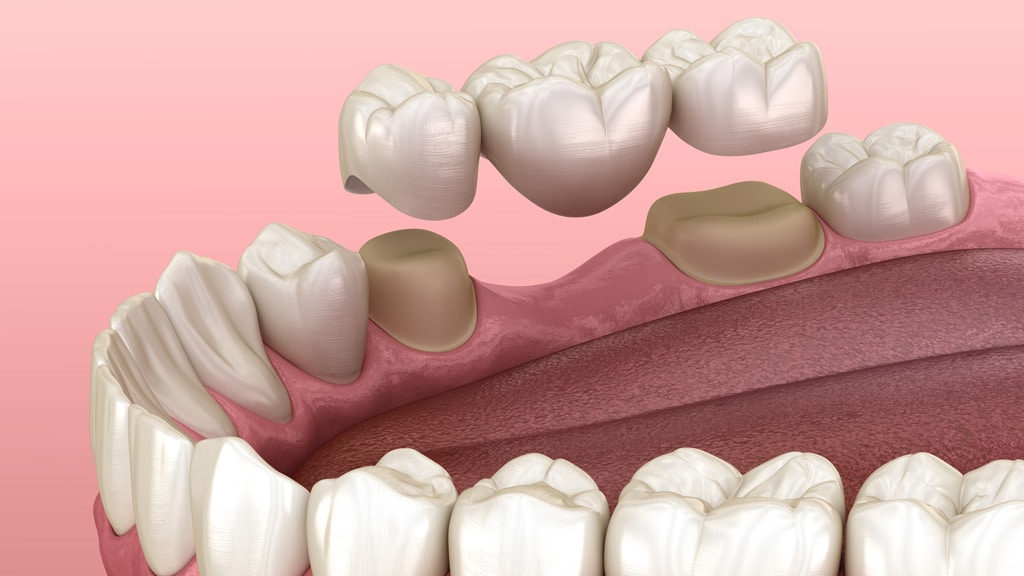What Are Dental Bridges?
Dental bridges are prosthetic devices used to replace missing teeth. They are designed to “bridge” the gap created by one or more missing teeth, using adjacent teeth or dental implants as support. Dental bridges are a common and effective solution for restoring both the function and aesthetics of a person’s smile.
The main function of dental bridges is to restore the ability to chew and speak properly and maintain the natural shape and alignment of the face. Bridges also help distribute the forces in the bite properly, preventing excessive stress on the remaining teeth. Additionally, they can improve the appearance of the smile by filling in the gaps left by missing teeth.

Types:
Traditional Dental Bridges: These bridges consist of one or more pontics (artificial teeth) held in place by dental crowns on the adjacent teeth, known as abutment teeth. The crowns are cemented onto the abutment teeth, securing the bridge in place.
Cantilever Bridges: This type of bridge is used when only one adjacent tooth is available to support the pontic. The pontic is anchored to a single crown on the adjacent tooth.
Maryland Bridges: Also known as resin-bonded bridges, Maryland bridges use a metal or porcelain framework that is bonded to the back of adjacent teeth with the help of resin. This type of bridge is often used for replacing missing front teeth.
Implant-Supported Bridges: In cases where multiple consecutive teeth are missing, implant-supported bridges may be recommended. Dental implants are surgically placed in the jawbone to serve as stable supports for the bridge. This type of bridge provides excellent stability and effectively mimics natural teeth function.
Who Are Dental Bridges For?
Dental bridges are suitable for individuals with one or more missing teeth and healthy adjacent teeth or dental implants that can support the bridge. Bridges can be used for both the front and back teeth.
Pros and Cons of Dental Bridges
Pros:
Cons:
How Long Do Dental Bridges Last?
The lifespan of a dental bridge can vary depending on the type of bridge, the materials used, the patient’s oral hygiene practices, and other factors. However, on average, dental bridges can last between 5 to 15 years or even longer with good oral hygiene and regular dental check-ups.
Interested in Learning More About Dental Bridges?
Dr. Patel and his team at Colonialtown Dental have extensive experience and knowledge regarding Dental Bridges and other solutions for missing teeth. Colonialtown Dental has been serving Orlando and the surrounding areas for over 28 years. Book online or give us a call today!
Services
Cosmetic Dentistry
General Dentistry
- Crowns
- Extraction
- Fillings
- Fluoride
- Gingivitis Treatment
- Periodontal Disease
- Regular Exam & Cleaning
- Root Canals
- Sealants
- Wisdom Teeth
Orthodontics
